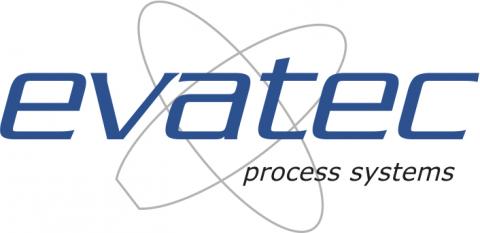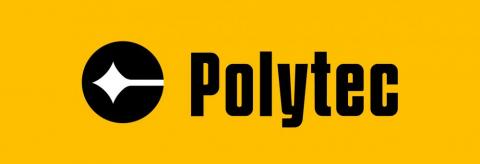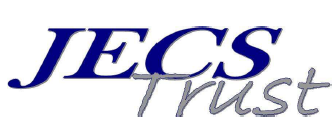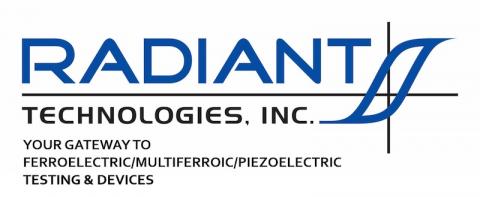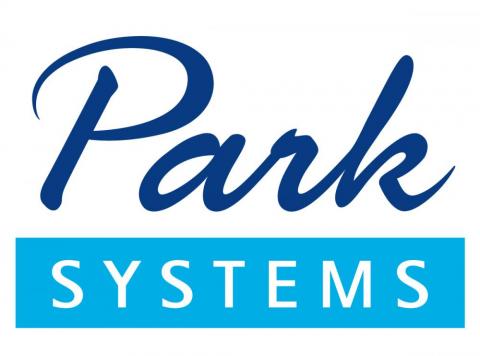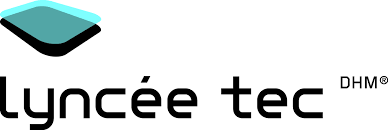EMF
Title: Structural and electronic coupling at oxide interfaces
Biography
Jean-Marc Triscone is Professor of Physics in the Department of Quantum Matter Physics at the University of Geneva, leading a group working on correlated oxide heterostructures and oxide interface physics. Jean-Marc Triscone obtained his PhD in 1987 in Geneva with Professor Øystein Fischer. In 1990-1991 and in 1995 he was a visiting scientist at Stanford University. Since 1996, he has been a full Professor in Geneva. Between 2001 and 2007 he has been Deputy-director of the National Center of Competence in Research MaNEP. Between July 2007 and June 2014, he was the Dean of the Faculty of sciences in Geneva. Since July 2015, he is a Vice-president of the University of Geneva. He is since 2006 a Fellow of the American Physical Society. He obtained in 2013 an ERC Synergy grant. He was awarded, with Harold Hwang and Jochen Mannhart, the 2014 European Physical Society Condensed Matter Division Europhysics Prize “For the discovery and investigation of electron liquids at oxide interfaces”.
Abstract
In this talk, I will discuss several interfacial couplings that occur in oxide heterostructures. Polar discontinuities can lead to 2-dimensional conduction between insulating materials – I will briefly discuss the case of the LaAlO3/SrTiO3 system; Structural and electronic coupling at oxide interfaces can also lead to interesting phenomena that we investigated in perovskite nickelates - well-known for their metal to insulator transition (MIT) and unique antiferromagnetic (AFM) ground state – there, I will show that NdNiO3/SmNiO3 superlattices display, depending on the thickness of the individual layers, a single or double MIT - a behavior that allows the role of interfacial structural and electronic coupling in heterostructures to be studied. Finally I will present results on vanadate-based heterostructures where we aimed at designing an artificial ferroelectric material. In this system, the interface sharpness seems to be controlled by the coupling of distortions and periodicity of the structure.
Title: Topological phases in ferroelectric materials
Biography
Javier Junquera got his BS. degree in physics at the Universidad de Oviedo (Spain) in 1996, and his PhD degree from the Universidad Autónoma de Madrid in 2001. After a two years as postdoctoral fellow at the Université de Liège, where he collaborated with Philippe Ghosez, and a further year at Rutgers University in Karin M. Rabe's group, he joined the Universidad de Cantabria as a Ramón y Cajal fellow. He was promoted to tenure in 2010. His most important methodological work is his contribution to the SIESTA project (http://www.icmab.es/siesta). SIESTA is both, a Density-functional Numerical Atomic Orbital (NAO) method and its computer program implementation. The outstanding feature of this method is its capability of limiting computer time and memory scale to increase only linearly with the number of atoms (order-N scaling). He contributed with an automatically optimized quality of the basis set, to the design and implementation interoperability with other first-principles programs. He has highly contributed to the teaching and dissemination of the method by organizing international workshops and preparing a full set of self-explanatory, openly accessible exercises.
He has specialized in the study of ferroelectric size effects in nanostructures, highlighting the role of the often neglegted depolarizing field in ferroelectric thin films. He has also set the standards for the computation of band offsets and Schottky barriers from first-principles. Always trying to collaborate hand-by-hand with experimental groups, he predicted the formation of domains of closure in ferroelectric ultrathin films and superlattices (confirmed experimentally three years later), and the sequence of growth of Ruddlesden-Popper series (confirmed experimentally ten years later). As invited researcher at University of California Berkeley, he recently predicted the formation of polar skyrmions and complex topological polar textures in ferroelectric superlattices. Currently, he is involved in the development of “second-principles” methods. The goal is to achieve simulations of tens of thousands of atoms at operating conditions (finite temperature), describing the coupled dynamics of ions and relevant electronic degrees of freedom, and accessing scales and physical phenomena that have never been investigated so far with atomistic details and first-principles accuracy. For his achievements, he was frequently invited to the most important international conferences. He wrote two monographs in his field of research.
Abstract
Complex topological configurations are a fertile area to explore novel emergent phenomena and exotic phases in Condensed-Matter Physics. The discovery of magnetic skyrmions one decade ago have triggered a flurry of research on these particle-like nanometer-sized topologically protected spin textures, mostly motivated by their potential use in spintronic devices such as race track memories. Since then, researchers have long wondered whether ferroelectrics may present topological textures akin to magnetic skyrmions and chiral bubbles. In this quest, the side by side advances in experimental growth and characterization techniques, and the development of new modelling tools are of paramount importance. In this respect, the emerging field of secondprinciples simulations, where an effective model is constructed by a judicious choice of the essential physics, and the parameters of the model are extracted by fitting to Density Functional Theory, are proving increasingly valuable in the study of large systems, overlapping in size with those that can be currently grown by atomic layer deposition methods. As a result of this continuous feedback between theory and experiment, the recent discovery of polarization vortices and their associated complex-phase coexistence and response under applied fields in superlattices of (PbTiO3)n/(SrTiO3)n suggests the presence of a complex, multi-dimensional system capable of emergent physical responses, such as a chirality. In this talk, I shall describe the latest developments to create, tune, and characterize topological textures in ferroelectrics. Polar structures with a well-defined topological charge and chirality will be presented. The stabilization of such non-uniform polarization topology results in highly enhanced susceptibilities, and also provides a pathway for engineering novel functionalities previously inaccessible, such as regions with negative capacitance. Financial support from the Spanish Ministry of Economy and Competitiveness through Grant FIS2015-64886-C5-2-P
ICE
Title: Magneto-Ionic Control of Magnetism
Biography
Geoffrey Beach is a Professor of Materials Science and Engineering at MIT. He received a B.S. in Physics from Caltech, a Ph.D. in Physics from the University of California, San Diego, and conducted postdoctoral work at the University of Texas at Austin. At MIT, he serves as Director of the MIT Materials Research Science and Engineering Center and Co-Director of the MIT Materials Research Laboratory, an Institute-wide organization coordinating materials research efforts across MIT. He also helped develop and launch the New Engineering Education Transformation within the School of Engineering at MIT, a cross-departmental, project-centric approach to education aimed to prepare students for the “new machines” that engineers will build mid-century and beyond. He has published >90 peer-reviewed papers and delivered >120 invited and plenary talks internationally. In 2018 he was elected to serve as Vice Chair of the American Physical Society Topical Group on Magnetism and its Applications (GMAG). His research group at MIT focuses on the design of advanced magnetic and ionic materials and heterostructures for spin-based memory, logic, and emerging applications. These efforts center on understanding and exploiting interfacial phenomena that provide new mechanisms with which to control magnetism electrically in nanoscale devices.
Abstract
Voltage control of magnetism has the potential to substantially reduce power consumption in spintronic devices, while offering new functionalities through field-effect operation. Magnetoelectric coupling has usually been achieved using complex oxides such as ferroelectrics,piezoelectrics, or multiferroics. Here, I describe an alternative approach known as magneto-ionic switching, which relies on solid-state electrical gating of a mobile ionic species to modulate the properties of a thin ferromagnetic film.
First, I will review our initial discoveries of voltage control of magnetism through solid-state electrochemical switching of the interfacial oxidation state in thin metallic ferromagnets. In ultrathin ferromagnet/oxide bilayers, perpendicular magnetic anisotropy (PMA) arises from interfacial hybridization between the ferromagnetic 3d and oxygen 2p orbitals. By using GdOx as a gate oxide with high oxygen ion mobility, I show that O2- can be reversibly displaced at a Co/GdOx interface with a small gate voltage, leading to unprecedented large, non-volatile changes to interfacial PMA by > 0.75 erg/cm2. High-resolution cross-sectional transmission electron microscopy (TEM) and in-situ electron energy-loss spectroscopy (EELS) during bias application directly reveals the reversible redox reaction taking place at the Co/GdOx interface. By optimizing the device structure and geometry, I show that these effects can be achieved with switching times down to <100 microseconds, and can be integrated into devices that can be gated locally to realize memory and logic functionalities.
In the second part of the talk, I focus on our recent discovery that magnetic anisotropy can be reversibly and nondestructively toggled at room temperature with a small gate voltage through H+ pumping in all-solid-state heterostructures, eliminating the irreversibility and structural degradation that occurs in oxygen redox-based structures. I show that H2O hydrolysis in ambient atmosphere catalyzed by a rare-earth oxide/noble metal interface can serve as a solid-state proton pump that enables nondestructive magnetic property gating with a modest voltage. We demonstrate reversible 90o magnetization switching in a thin Co film at room temperature by either inserting H+ at its interface with an oxide or loading hydrogen into an adjacent heavy metal layer. The mechanism permits both unipolar toggle switching and nonvolatile state retention, with no discernible irreversibility in magnetic properties of the ferromagnet after >2000 cycles. Moreover, since heavy metals like Pt and Pd that exhibit strong spin-orbit coupling are also well-known hydrogen storage materials that can be driven between a metal and metal-hydride phase, a host of spin-orbit induced phenomena at heavy-metal/ferromagnetic interfaces becomes accessible to voltage gating despite the fact that electric fields cannot be applied directly.
Title: Point Defects in Lithium Layered Oxides for Energy Storage
Biography
Will Chueh is an Assistant Professor in the Department of Materials Science & Engineering and a Center Fellow of the Precourt Institute for Energy at Stanford University. He leads a group of more than thirty tackling the challenge of decarbonizing various energy transformation pathways. He received his B.S. in Applied Physics, M.S. and Ph.D. (2010) in Materials Science from Caltech. Prior to joining Stanford in 2012, he was a Distinguished Truman Fellow at Sandia National Laboratories. Prof. Chueh has received numerous honors, including the MRS Outstanding Young Investigator Award (2018), Volkswagen/BASF Science Award Electrochemistry (2016), Camille Dreyfus Teacher-Scholar Award (2016), Sloan Research Fellowship (2016), NSF CAREER Award (2015), Solid State Ionics Young Scientist Award (2013), Caltech Demetriades‐Tsafka‐Kokkalis Prize in Energy (2012), and the American Ceramics Society Diamond Award (2008). In 2012, he was named as one of the “Top 35 Innovators Under the Age of 35” by MIT’s Technology Review.
Abstract
The strength of the metal-oxygen (M-O) bond in oxides principally determines the band structure and the stability of oxygen relative to oxygen gas. Accordingly, such bonding is central to energy storage (for determining the redox potential) and electrocatalysis (for determining adsorbate bonding strength at the electrochemical interface). Traditionally, the M-O bond strength is tuned by changing the metal. We have recently discovered another important knob in lithium metal oxides (LiXMO2): metal vacancies and antisite defects. In these materials, which are ubiquitous as positive electrodes in lithium-ion batteries, metal vacancies can form by moving a metal into the Li van der Waals gap. X-ray and neutron scattering measurements confirmed that introducing metal vacancies can substantially contract neighboring M-O bond length, transforming single bonds to double bonds (i.e., terminal metal oxo ligand). In select local configurations, even the peroxo species (O-O)2- can form. These variations of oxygen bonding leads to dramatic variation in the energetics of the bonding and antibonding states as well as the stability of oxygen relative O2 gas. In this talk, I will discuss the connection between local defect configurations and the M-O and O-O bonding in LiXMO2, where M spans 3d, 4d and 5d transition metals.
ISAF
Title: Study of ferroelectrics: past, current and future
Biography
Yun Liu graduated from the Xian Jiaotong University, China with her BSc, MSc and PhD. She has since held a position at the National Institute of Advanced Industrial Science and Technology (AIST), Kyushu, Japan (1998-2001) before the commencement of her Postdoctoral Fellow position at the Research School of Chemistry in 2001. She was awarded fellowships of the AIST (1998-1999), the Science and Technology Agency (1999-2001, now renamed as the Fellow of Japan Society for the Promotion of Science) and the Australian Research Council (ARC) Queen Elisabeth II (2006-2010). She was made a fellow of the Australian Institute of Physics (FAIP) and Certified Materials professional (CMP). She was also a member of the Materials of Australia (MMA) and the Society of Crystallographers in Australia and New Zealand (MSCANZ). She was promoted to Associate Professor at the Research School of Chemistry in 2011.
Abstract
Ferroelectric materials have been well developed for various applications ranging from sensors to capacitors, memory devices, transducers and actuators since the first ferroelectricity, rochelle salt was discovered in 1920s. The study of ferroelectrics has attracted considerable attentions from researchers in condensed matters physics and solid-state chemistry (including crystallography) because the relation between the structure and properties in such strongly correlated material systems is very complicated and fascinating. In this talk, I will discuss the importance of the structure and phase transition in the course of seeking and developing new ferroelectric materials. Through the case studies, I will address several critical issues in the study of ferroelectric and related materials, regarding (1) average and local structure; (2) defects and local chemistry; (3) surface and bulk effect; (4) low dimensional form, and (5) non-traditional metal oxides. In the end, I will share my vision and insight on the future research in ferroelectrics that may be beyond the traditionally well-defined ferroelectrics.
Title: Ferroelectric Hafnium Oxide and its Applications in Non-Volatile Memories, Negative Capacitance Elements, and Neuromorphic Networks
Biography
Uwe Schroeder, Ph.D., is Deputy Scientific Director of NaMLab since 2009. The main research topics are material properties of ferroelectric hafnium oxide and the integration of the material into future devices.
Prior to joining NaMLab, Schroeder was in a Senior Staff Scientist position at Qimonda, which was Infineon Technologies Memory Division and Siemens Semiconductor before. He jointed Siemens in 1997 for DRAM capacitor development in the DRAM Development Alliance with IBM and Toshiba in Hopewell Jct., NY before transferring to Infineon’s Memory Development Center in Dresden, Germany in 2000. Here, he continued the research on high k dielectric and its integration into DRAM capacitors as a project manager. During this work the so far unknown ferroelectric properties of doped HfO2 based dielectrics were found in 2007. He focused on a detailed understanding of these new material properties and their integration into memory devices. He is (co-) author of more than 350 papers and conference contributions and more than 30 patents, including more than 70 peer-reviewed publications, 40 invited presentations, and editor of a book on ferroelectric HfO2 material properties and based devices.
Schroeder received a Master degree in Physics and a PhD degree in Physical Chemistry field from University of Bonn, Germany including a research visit at UC California, Berkeley and worked at University of Chicago as a post-doctoral researcher.
Abstract
In the last 10 years, the interest in HfO2 or ZrO2 based ferroelectric films for novel semiconductor applications steadily increased. Lead-free CMOS compatible ferroelectric layers even below 10 nm film thickness enable scalable devices like high aspect ratio ferroelectric capacitors (FeCap) and field-effect transistors (FeFET) in 2x nm technology nodes. But also further applications like ferroelectric tunnel junctions, negative capacitance FETs (NCFET), neuromorphic, piezo, and pyro electric devices are in discussion. Ferroelectric properties are caused by a polar orthorhombic Pca21 structure in polycrystalline films with a grain size of typically 20-30 nm. TEM and PFM studies are revealing multiple phases within one grain in the pristine case leading to larger (> 100 nm) domains after field cycling. By placing a doped HfO2 layer with a small number of grains within the gate-stack of a nanoscale FeFET structure having the channel length of 30 nm, a detailed analysis of the switching behavior of these single grains is possible. Nucleation limited switching is observed with slightly different coercive fields for different single grains. Multiple excitation pulses, each of which is insufficient for polarization reversal, induce an accumulative effect, which eventually leads to ferroelectric switching. In addition, such an accumulative switching can be exploited to mimic the integrateand-fire activity of biological neurons, which, together with FeFET-based synapses, might allow for building fundamental computing blocks of brain-inspired neural networks. Recently, it is shown that ferroelectrics can possess a negative capacitance, which could improve the energy-efficiency of conventional CMOS transistors beyond fundamental limits. For this purpose, a ferroelectric HfO2 layer is incorporated into a capacitor together with a dielectric layer to prevent the initial screening of polarization charges during switching. The results are giving an inside view on the fundamental physics of ferroelectricity which indicate the energy barrier in a doped HfO2 double well potential as the origin of negative capacitance. Here, the fast and hysteresis-free ferroelectric switching behavior of a negative capacitance device can be confirmed, which is critical for future applications.
Title: Fractal Aspects and Critical Lengthscales in Ferroelectrics
Biography
Kenji Uchino, one of the pioneers in piezoelectric actuators, is Founding Director of International Center for Actuators and Transducers and Professor of EE and MatSE at Penn State University. He was Associate Director (Global Technology Awareness) at The US Office of Naval Research – Global Tokyo Office (2010-2014). He was also the Founder and Senior Vice President of Micromechatronics Inc., State College, PA (2004-20010). He became Research Associate/Assistant Professor (1976) in Physical Electronics Department at Tokyo Institute of Technology, Japan, then, joined Sophia University, Japan as Associate Professor in Physics Department in 1985. He was recruited from The Penn State University in 1991. He was the Founding Chair of Smart Actuators/Sensors Committee, Japan Technology Transfer Association sponsored by Ministry of Economics, Trading and Industries, Japan (1987-2014), and is a long-term Chair of International Conference on New Actuators, Messe Bremen, Germany since 1997.
His research interest is in solid state physics, especially in ferroelectrics and piezoelectrics, including basic research on theory, materials, device designing and fabrication processes, as well as application development of solid state actuators/sensors for precision positioners, micro-robotics, ultrasonic motors, smart structures, piezoelectric transformers and energy harvesting. K. Uchino is known as the discoverer/inventor of the following topics: (1) lead magnesium niobate (PMN)-based electrostricive materials, (2) cofired multilayer piezoelectric actuators (MLA), (3) superior piezoelectricity in relaxor-lead titanate-based piezoelectric single crystals (PZN-PT), (4) photostrictive phenomenon, (5) shape memory ceramics, (6) magnetoelectric composite sensors, (7) transient response control scheme of piezoelectric actuators (Pulse-Drive technique), (8) micro ultrasonic motors, (9) multilayer disk piezoelectric transformers, and (10) piezoelectric loss characterization methodology. He has authored 570 papers, 75 books and 31 patents in the ceramic actuator area.
He is a Fellow of American Ceramic Society since 1997, a Fellow of IEEE since 2012, and also is a recipient of 29 awards, including Distinguished Lecturer of the IEEE UFFC Society (2018), International Ceramic Award from Global Academy of Ceramics (2016), IEEE-UFFC Ferroelectrics Recognition Award (2013), Inventor Award from Center for Energy Harvesting Materials and Systems, Virginia Tech (2011), Premier Research Award from The Penn State Engineering Alumni Society (2011).
Abstract
Particle size dependence of ferroelectricity was first demonstrated by Uchino on barium titanate and lead titanate based ceramics. Thin film ferroelectrics are known to degrade their performance with reducing the film thickness. Based on these experimental results, Uchino will discuss size effect on ferroelectricity in particle, thin film and amorphous statuses. Ferroelectric materials behave as fractal systems in their various dynamic characteristics. Polarization reversal takes place through the appearance of a certain number of seeds for domains of the opposite polarization which subsequently grow in the forward and lateral directions. The system manifests fractal properties, since lateral growth of the domain walls in the result of the formation of self-similar structures. The interest in relaxor ferroelectrics is stimulated by a diffuse phase transition in a wide temperature range, and dielectric relaxation, which seems to be originated from micro-domains created in unpoled crystals. In this paper, the author will refresh the previously-reported experimental results on (1) Dependence of the Crystal Structure on Particle Size [K. Uchino, E. Sadanaga and T. Hirose: J. Amer. Ceram. Soc. 72 (8), 1555-1558 (1989)], (2) critical exponents in the dielectric permittivity [K. Uchino and S. Nomura: Ferroelectrics Letters, 44, 55 (1982)] and (3) acoustic emission (AE) during the domain reversal [H. Aburatani, J. Witham and K. Uchino: J. J Appl. Phys., 37, 602 (1998)] from a consistent viewpoint, i.e., fractal analysis.
Title: Using Engineered Interfaces and Strain-Gradient Regions to Design Properties in Electroceramics
Biography
Satoshi Wada is a Professor of Material Science and Technology at University of Yamanashi. His main research interests include dielectric and piezoelectric nanoparticles, ceramics and single crystals, nano-structure induced enhanced property, and domain engineering in ferroelectric materials. He obtained B.S. degree (1986) in Metallurgy at Ibaraki University, M.S., (1988) and Ph.D. (1991) degrees in Material Science at Tokyo Institute of Technology. After graduation, he joined the faculty (assistant professor) at Tokyo University of Agriculture and Technology from 1991 to 1999. During Tokyo University of Agriculture and Technology, he has held visiting scientist at the Pennsylvania State University from 1996 to 1997. On 1999, he joined the faculty (assistant professor) at Tokyo institute of Technology, and promoted to an associate professor there on 2000. On 2007, he joined the faculty (associate professor) at University of Yamanashi and on 2009, promoted to full professor.
He has authored more than 300 publications, 30 patents, and 10 co-authored books in the material science field. He is a member of IEEE, The American Ceramic Society, the Materials Research Society, the Ceramics Society of Japan, the Japanese Society of Applied Physics, the Physical Society of Japan, the Chemical Society of Japan, Catalysis Society of Japan, and the Society of Powder Technology. He co-organized a symposium at the MS&T06 Conference (2006, Cincinnati), the 8th International Symposium on Ferroic Domains and Micro- to Nanoscopic Structure (2004, Tsukuba), IUMRS-ICAM 2003, 2007, 2014 (2003 Yokohama, 2007 Tokyo & 2014 Fukuoka), the 3rd International Ceramics Congress (2010, Osaka), and the 6th Japan-China Ferroelectric Materials and Application (Yamanashi, 2014). He received the Best Presentation Award of MRS-Japan in 1996, the JCerSJ Best Manuscript Award of the Ceramics Society of Japan in 1997, the Young Scientist Award of Electroceramics Division in 1999, the PFEIL Award in 2005, the Richard Fulrath Award of the American Ceramics Society in 2007, the JJAP Editorial Contribution Award of the Japanese Applied Physics Society in 2007, the AEM Award of the Japan AEM Society in 2008, the CSJ Award of the Ceramics Society of Japan in 2009 and Ferroelectric Recognition Award of the IEEE in 2018.
Abstract
We materials scientists understand that for current electroceramic materials, it is difficult to achieve either simultaneous enhancement of directly-opposed properties, new physical properties, or ultrahigh properties. So, what can we do to develop new and innovative materials? We believe that future electroceramic materials can be designed on the basis of the "interface engineering" with strain-gradient regions; this is a new frontier for the field. Domain engineering is one means of "interface engineering" with strain-gradient regions, based on homo-interfaces between domains with different crystallographic orientations. Interfaces such as non-180˚ ferroic domain walls are very effective in enhancing dielectric and piezoelectric properties, as is shown by the large dielectric and piezoelectric enhancements for PZN-PT and PMN-PT single crystals. We will present some applications of "ferroic homo-strained interfaces" for electroceramics with enhanced properties. On the other hands, ferroic homo-strained interfaces are strongly dependent on temperature; for example, above the Curie temperature, these interfaces disappear. Thus, it is possible that hetero-strained interfaces may enable property enhancement with less temperature and DC-bias dependence. For thin film science, there are many reports about "hetero-strained interfaces", but the literature is much smaller for bulk materials. Novel electroceramics with a high density of "hetero-strained interfaces" may become new frontier materials with enhanced properties. For this purpose, we must develop new and innovative preparation methods. We would like to propose some new ways to prepare the materials for future material frontier. We hope that this presentation can be useful for young scientists.
IWPM
Title: Piezo MEMS based inkjet arrays – accelerating the journey from sketch to market
Biography
Peter Mardilovich is currently Chief Engineer at Xaar plc in Cambridge, UK. He received his Ph.D. in Physical Chemistry at the National Academy of Sciences of Belarus, where he began his career, progressing from Research Associate to Senior Scientist and Head of a research group. In the early 1990s, while at Glasgow University, he was awarded two personal grants from the Science Engineering and Research Council of the UK. Prior to joining Xaar, he was Senior Technologist at Hewlett-Packard within the Imaging and Printing division. Between 2005 and 2007 he was the visiting scientist at MIT, managing the HP-MIT strategic alliance; and before coming to HP, Peter worked as Senior Scientist at Nanomaterials Research Corporation and as Research Associate at Worcester Polytechnic Institute. His expertise lies in thin film technologies, thin-film and bulk piezo-ceramics, ceramic MEMS and membranes, printing technologies, printed electronics, anodic oxides and self-assembled structures, solid-oxide fuel cells and hydrogen separation. Peter holds approximately 230 world-wide granted patents (106 issued in the US) with about 30 applications still pending. He is the author of more than 100 papers and has given over 120 presentations. His works have garnered over 10,300 citations, resulting in an h-index of 26 (i10-index of 46).
Abstract
Interest in piezoelectric thin film MEMS devices is increasing worldwide and the range of devices is expanding. In addition to areas of early adoption, such as inkjet printheads, which require powerful piezo-actuators and challenging MEMS designs, more new and innovative applications for this technology are being proposed.
In this context, many companies are trying not only to release new products, but also grow new platforms which could allow them to develop a range of products and secure their position in the wider market. This task can be extremely difficult for anyone, especially for companies that do not have sufficient prior knowledge and expertise in those technologies and/or unlimited resources. In this presentation, I will explore the challenges faced by companies in their efforts to develop, specifically, a new technology platform that utilizes thin film piezo and Si-MEMS.
The main emphasis will be not so much the challenges per se, but rather the ways in which they can be avoided or minimized, as well as the various options that can be pursued to resolve them in order to accelerate the overall development. I will outline the importance of a building a diversified team, with the relevant expertise to meet the needs of the development challenge, the power of partnerships and the opportunities for progress via collaboration with academia as well as strategies for avoiding inefficiency and bottle-necks within these combined efforts.
The proposed approach will be illustrated by a real life story: the successful journey by Xaar from a top-level, highly ambitious vision to the creation of a new thin film PZT based Si-MEMS platform. The XAAR 5601 printhead, which was commercialized in 2018, is the first product resulting from this platform, which will be the foundation of a new family of piezo inkjet printheads with applications and opportunities in multiples markets.
PFM
Title: Materials on the edge between Ferroelectricity and Electrochemistry
Biography
Sergei Kalinin is the Director of the Institute for Functional Imaging of Materials (IFIM) and distinguished staff member at the Center for Nanophase Materials Sciences at Oak Ridge National Laboratory. He received his MS degree from Moscow State University in 1998 and Ph.D. from the University of Pennsylvania (with Dawn Bonnell) in 2002. His research presently focuses on the applications of big data and artificial intelligence methods in atomically resolved imaging by scanning transmission electron microscopy and scanning probes for extraction of relevant physics and chemical behaviors on the single-atom levels, as well as mesoscopic studies of electromechanical and transport phenomena via scanning probe microscopy. Sergei has co-authored >600 publications, with a total citation of >26,000 and an h-index of >80. He is a fellow of MRS, APS, IoP, IEEE, Foresight Institute, and AVS; a recipient of the RMS medal for Scanning Probe Microscopy (2015); Blavatnik Award for Physical Sciences (2018), Presidential Early Career Award for Scientists and Engineers (PECASE) (2009); Burton medal of Microscopy Society of America (2010); 3 R&D100 Awards (2008, 2010, and 2016); and a number of other distinctions.
Abstract
Ferroelectricity on the nanoscale has remained a subject of much fascination in condensed matter physics for the last several decades. It is well-recognized that stability of the ferroelectric state necessitates effective polarization screening, and hence screening mechanism and screening charge dynamics become strongly coupled to ferroelectric phase stability and domain behavior. These behaviors become even more complicated in the hybrid perovskites, in which ionic dynamics and consequently redox equilibria on surfaces and interfaces become an integral part of the materials functionality. In this presentation, I will illustrate several recent results on ferroelectric and ferroic – chemical coupling in these materials. In classical inorganic ferroelectrics, we show that at the nanoscale the ferroelectric state is fundamentally inseparable from electrochemical state of the surface, leading to emergence of coupled electrochemicalferroelectric states. I will present the results of experimental and theoretical work exploring the basic mechanisms of emergence of these coupled states including the basic theory and phase-field formulation for domain evolution. I further discuss the thermodynamics and thickness evolution of this state using analytical theory and phase-field modelling. These considerations further stimulate the development of the novel SPM modalities addressing time-dependent dynamics and chemical changes during SPM imaging.
I will further delineate the applications of in-situ SPM – time of flight secondary ion mass spectrometry (ToF SIMS) to map the changes in surface chemistry during tribological and local electrochemical experiments, including ferroelectric polarization switching and pressure-induced resistance changes in oxides. In the hybrid perovskite, we further extend SPM techniques to explore the coupling between ferroelectricity and ionic motion and light-induced phenomena, whereas ToF-SIMS of active device structures provides insight into associated ionic dynamics. I will further present recent results on pushing this understanding to the atomic level as enabled by physics-informed big data and machine learning technologies applied to static and dynamic Scanning Transmission Electron Microscopy. The deep learning models trained on theoretically simulated images or labeled library data demonstrate extremely high efficiency in extracting atomic coordinates and trajectories, converting massive volumes of statistical and dynamic data into structural descriptors. I further present a method to take advantage of atomicscale observations of chemical and structural fluctuations and use them to build a generative model (including near-neighbor interactions) that can be used to predict the phase diagram of the system in a finite temperature and composition space. Similar approach is applied to probe the kinetics of solid-state reactions on a single defect level and defect formation in solids via atomicscale observations. These advances position STEM towards transition from purely imaging tool for atomic-scale laboratory of electronic, polarization, and chemical phenomena.




















